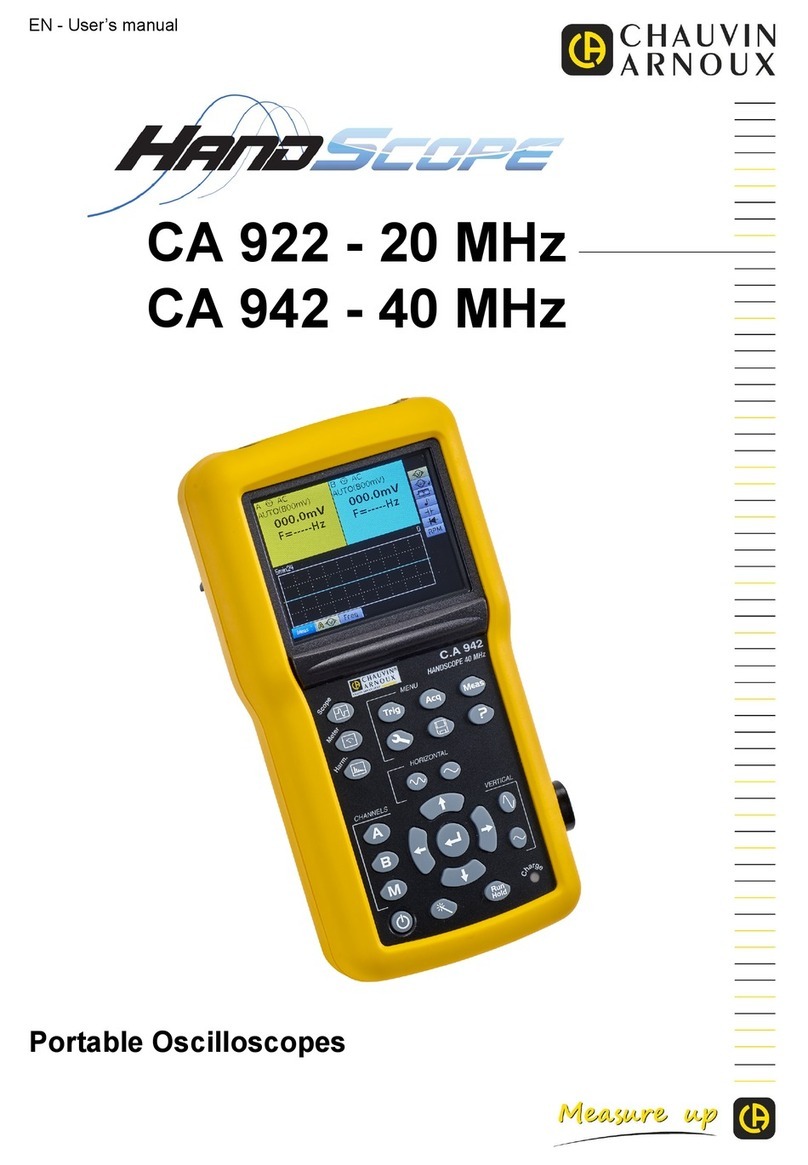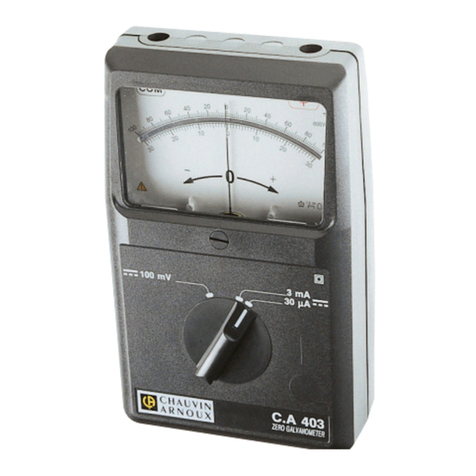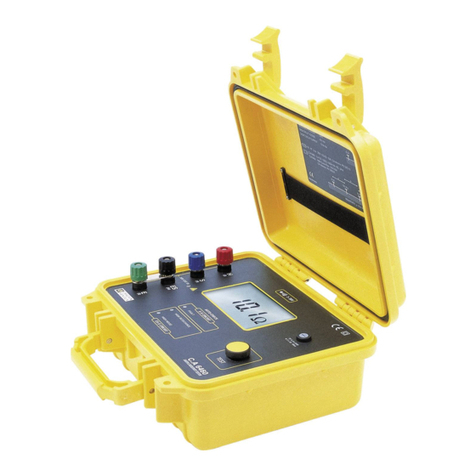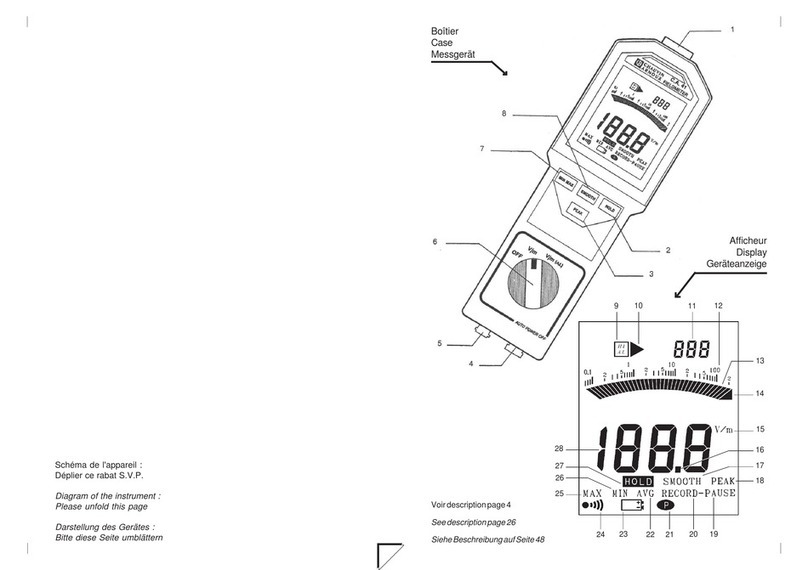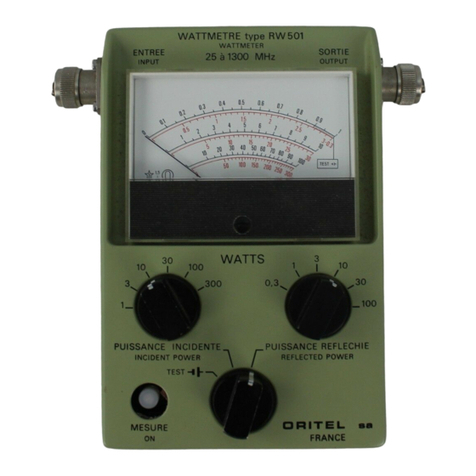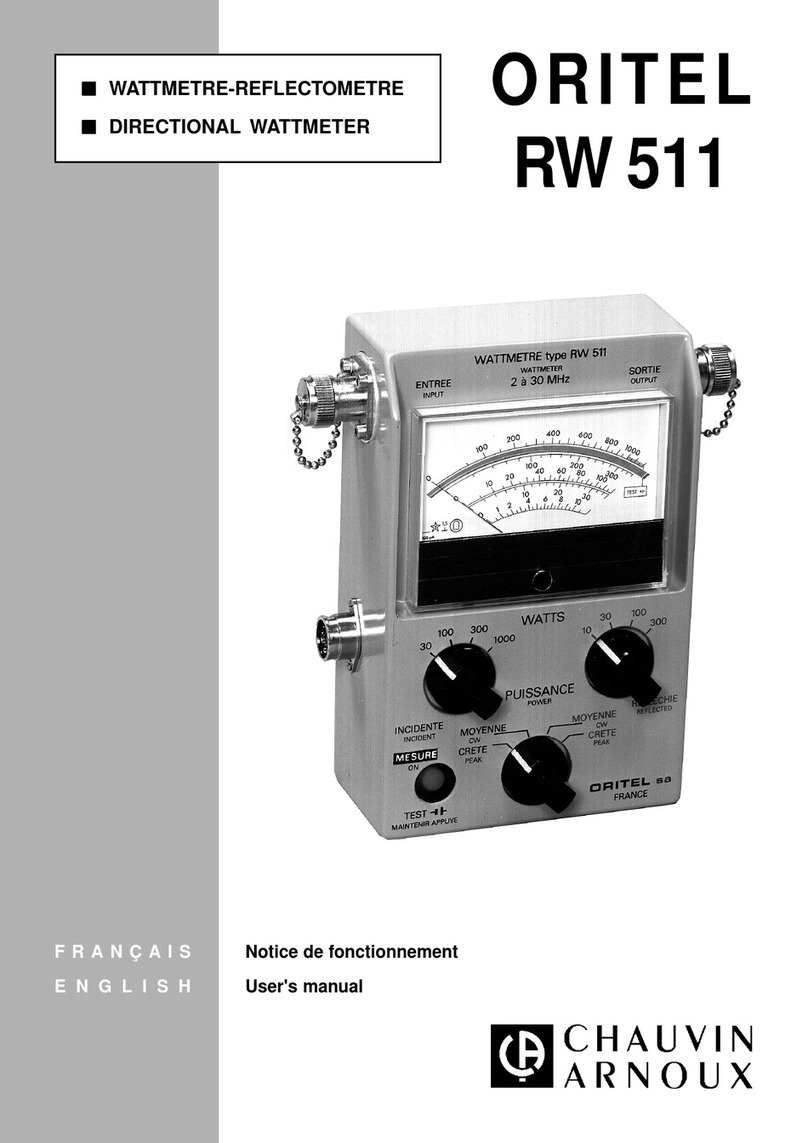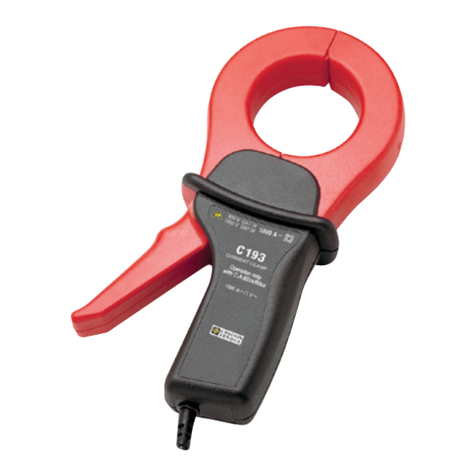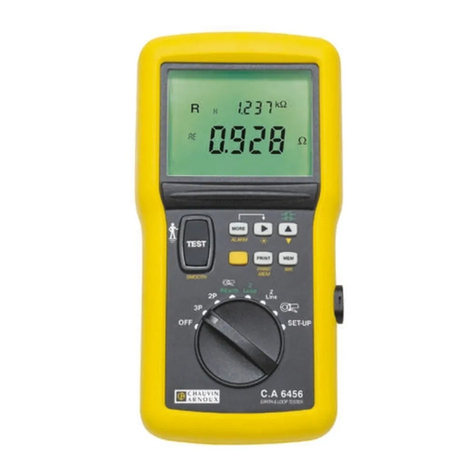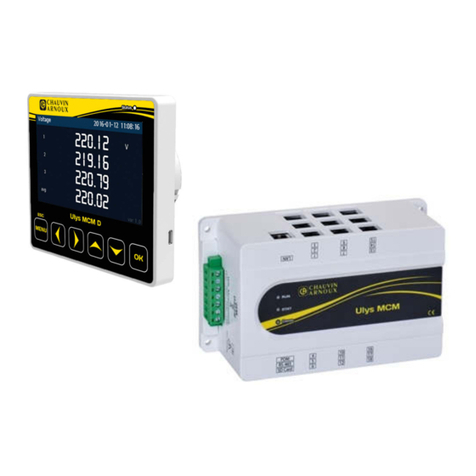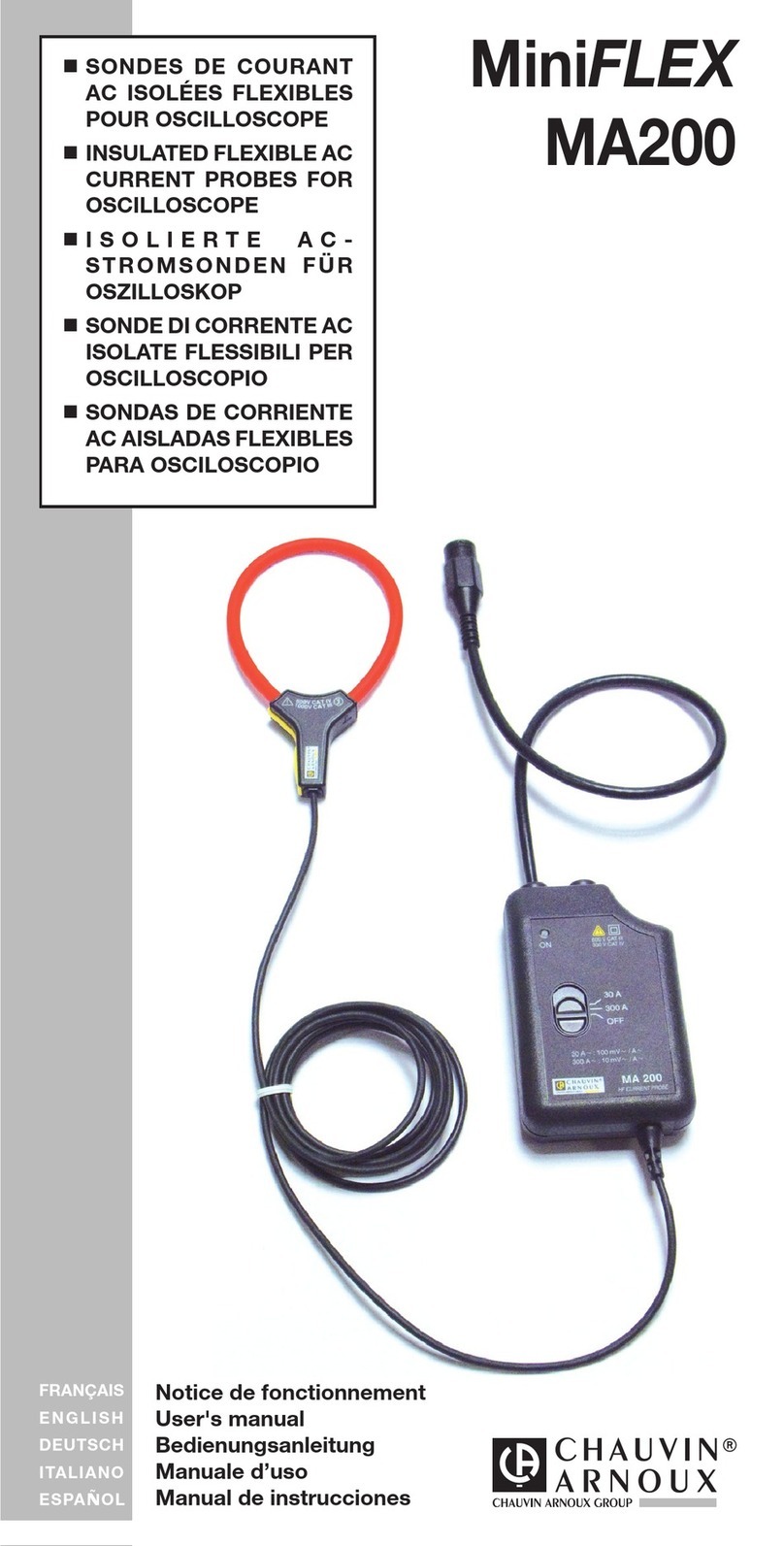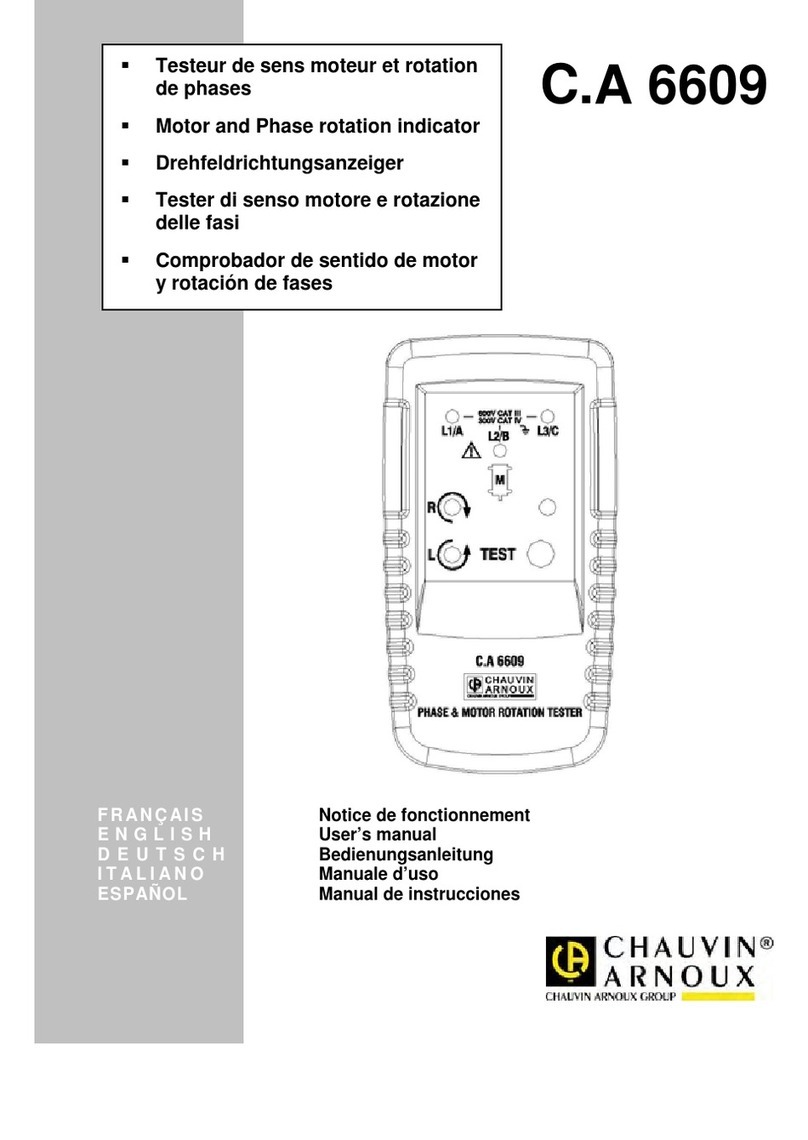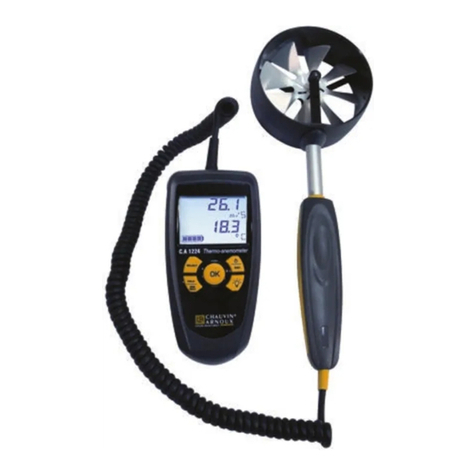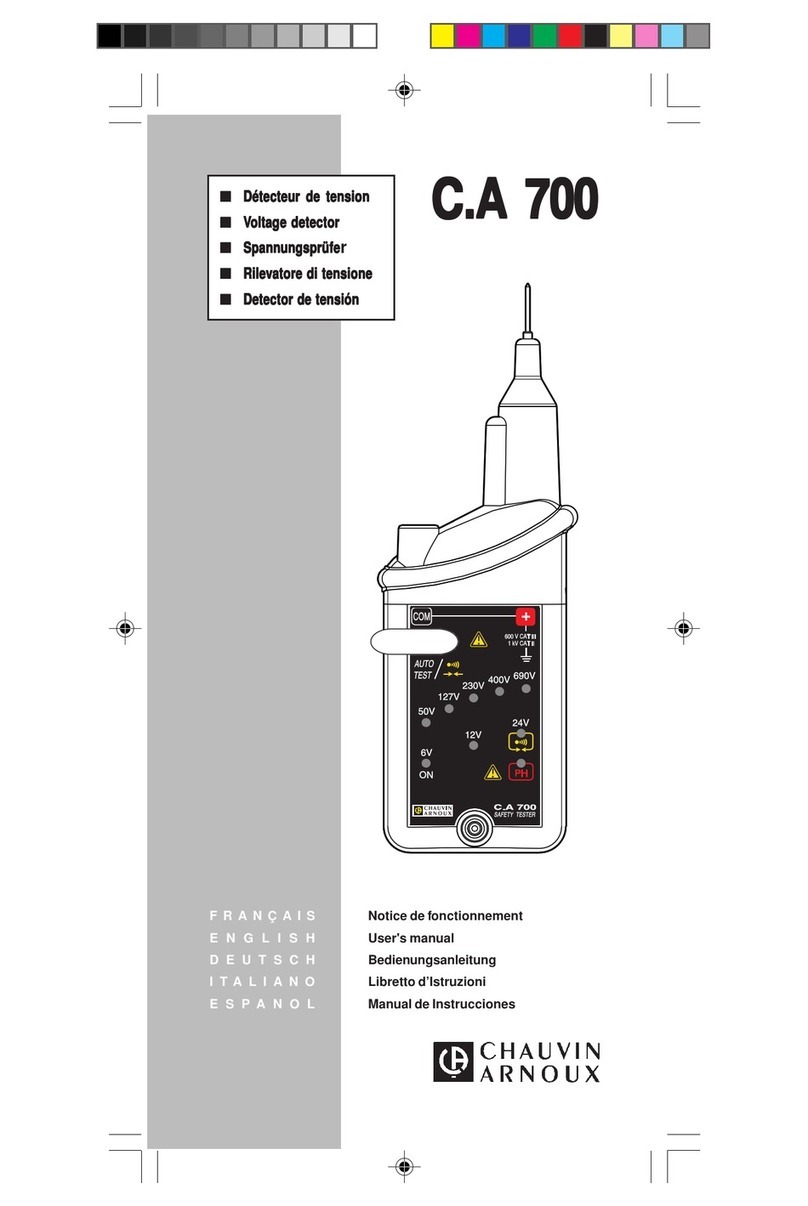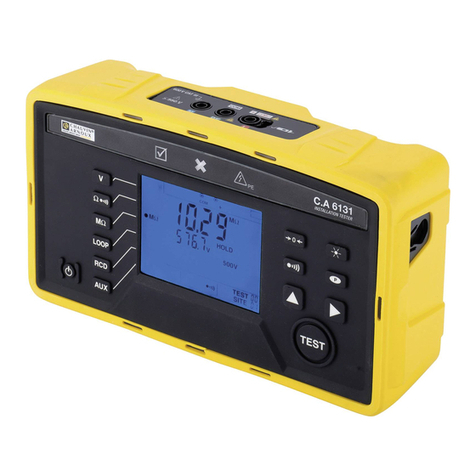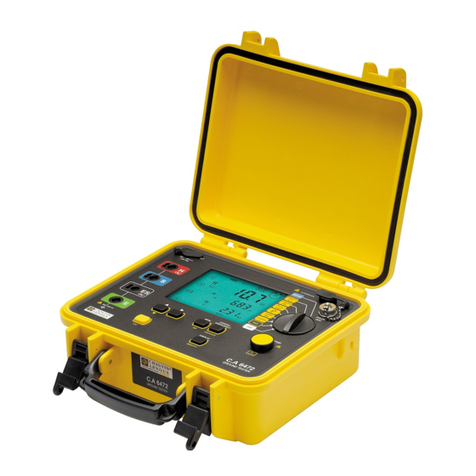5
1One C.A 6532 or C.A 6534, depending on which model was ordered.
2Two straight/right-angle safety leads (red and black).
3One red crocodile clip.
4One black test probe.
5Two wire grips (red and black).
6Six LR6 or AA batteries.
7One carrying case, which also allows hands-free use.
8One CD containing the user manuals (one file per language).
9One multilingual safety data sheet.
10 One multilingual getting started guide.
11 One CD containing the MEG software.
1. PRESENTATION
1.1. DELIVERY CONDITION
English
Safetydatasheet MeasuringInstrumentin CAT II or CAT IIIor CAT IV (en)
Foryour safety and t o avoid damage to property:
Readwhat follows carefully and observethese precautions
Readthe other documents provided carefully, including any documents on the CD-ROM
Meaningsof the principal symbols that may be present on your product:
CAUTION!Risk of Danger!
Referto this safety datasheet and comply
withthe precautions for use.
CAUTION!Risk of electric shock!
Refer to this safety datasheet, to the user
manualand comply with the precautions for use.
Current clamp: Can be applied to or
removed from non-insulated or bare
conductorsat dangerous voltages.
Currentclamp: Do not apply toor remove from
conductorsat dangerous voltages.
The CE marking indicates compliance
withthe European "Low Voltage", "EMC",
"WEEE",and "RoHS" directives.
In the European Union, this product is
subjectto selective collectionin accordance
witht he European WEEE directive. Do not
disposeof itas ordinarywas te; contact the
manufacturer for information about
collectionpoints.
Earth
Doubleinsulation
Do not dispose of the batteries as ordinary
waste;take them to a collection point.
Conditionsof use
Temperature,Humidity: Comply with the values stated in the user manual.
Altitude: 2 000 m
Pollutiondegree : 2
Precautionsfor use
Thesesafety instructions mustbe respected to assurethe personal safetyand the environmentof use. If
youdo not comply with them, there is a risk of electric shock, explosion or re.
Ifyou use these instruments other than as specied or without observing the elementary safety rules, the
protectionthey provide may be compromised, endangering you.
Thesafety of any system which may include these leads or accessories is the responsibility of the
assemblerof the system.
Each time before use, always check that the insulation of the leads or accessories is in good
condition.Any element whose insulation is damaged (even partially) must be removed from use and
scrapped.A change of color of the insulating material is an indication of deterioration.
Thesteady-state voltages, currents, and measurement categories are marked onthe instruments, on
thecords, and on the accessories. Comply with these values.
Use specic individual safety protections when hazardous live parts can be accessible in the
installationwhere the measure is performed
Before using your instrument, check that it is in goodworking order (for example,by measuring a
knowndangerous voltage).
Ifthe manual states how to replace the fuse(s) of your instrument, use only the recommended fuses.
Beforereplacing the batteries (rechargeable or not), disconnect the leads of your instrument.
The use of a measurement instrument, a lead or an accessory with a lower
categoryor voltage downgrades the use of the assembly (instrument + lead +
accessory)to the lowest category and/or operating voltage.
Using a measuring instrument in a category II or III or IV environment can be dangerous. In such
measurement environments, the operators must be trained and/or accredited and/or informed of the
safetymeasures to be taken.
Measurementcategories:
CATII: Measurementcategory II is for measurements performed on cir cuits directly connectedt o the
lowvoltage installation
Examples:measurements on household appliances and portable tools.
CATIII: Measurement category III is for measurement performed in the building installation
Examples:distribution boards, circuit-breakers,machine or industrialequipment with permanent
connectionto the xed installation.
CATIV: MeasurementcategoryIVisformeasurementsperformedatthesourceofthelow-voltageinstallation.
Example: meters and measurements on primary overcurrent protection devices and ripple
controlunits.
Cleaning
Disconnectthe leads or the test accessories
Use a soft cloth, dampened with soapy water. Rinse with a damp cloth and dry rapidly with a dry
clothor forced air. Do not use alcohol, solvents, or hydrocarbons.
Donot modify the leads or accessories. Any non-compliant repairs can cause risks of electric shock
orburns.
